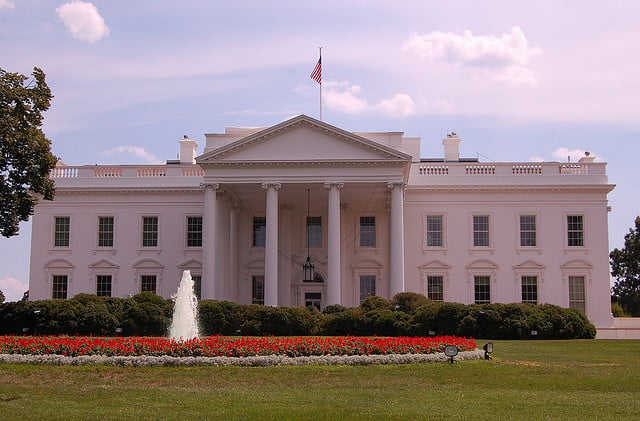The US federal Occupational Safety and Health Administration (OSHA) conducted its twelfth annual “National Safety Stand-Down to Prevent Falls in Construction” during May 5-9, 2025. The Stand-Down focused on fall hazards and fall prevention, emphasizing safety demonstrations, trainings and hazard recognition activities. Falls are a leading cause of workplace injuries and deaths in construction, and can also be important hazards in non-construction locations where workers use ladders or work in elevated locations. The remainder of this note summarizes approaches to fall hazards and fall protection.
Audit, Compliance and Risk Blog
Tags: Health & Safety, OSHA, Safety and Health at Work, workplace safety, Cal/OSHA, Injury, Safety Regulations, Worker Safety, Risk Management, Fall Prevention
California guidance for worker protection during post-wildfire cleanups
Posted by Jon Elliott on Wed, Apr 23, 2025
In the aftermath of January’s massive southern California wildfires, the California Division of Occupational Safety and Health (Cal/OSHA) has recompiled and highlighted its guidance for post-wildfire cleanup. Although this guidance is not unique (I’ve written about similar websites HERE), it provides a timely reminder to organizations in areas that may be subject to wildfires, and to other harmful incidents as well. The remainder of this note summarizes Cal/OSHA’s latest compilation.
Read MoreTags: workplace safety, Cal/OSHA, Fire Safety, Wildfire Cleanup, Occupational Health, Hazard Assessment, Environmental Health and Safety, Wildfire Preparedness, Health Hazards, Safety Regulations, Fire Risk Management, Emergency Response, Worker Safety, Post-Wildfire Recovery, Workplace Safety Guidelines
Biden Administration proposes limited increases in OSHA budget
Posted by Jon Elliott on Mon, Apr 08, 2024
On March 11, the Biden Administration issued its budget proposal for federal Fiscal Year (FY) 2025 (October 1, 2024 through September 30, 2025). The administration proposes a $655.5 million budget for the Occupational Safety and Health Administration (OSHA), a 3.7% ($32.1 million) increase above OSHA’s adopted 2023 budget of $632.4 million (the Administration had proposed $701 million). OSHA is presently operating under the latest FY 2024 Continuing Budget Resolution (since no budget has been adopted for FY 2024 (I wrote about the Administration’s FY 2024 proposal HERE). Even if an FY 2025 budget is enacted, political differences make significant reductions from this proposal likely, but it’s worth reviewing the proposal as a reflection of the Administration’s ongoing environmental priorities. The remainder of this note summarizes the Biden Administration proposal.
Read MoreTags: Health & Safety, OSHA, Safety and Health at Work, Cal/OSHA, FTE, Joe Biden, USA
NIOSH offers Best Practice guidance for employers that host “temp” workers’
Posted by Jon Elliott on Tue, Feb 28, 2023
Is your organization hiring "temp" workers —to hedge your labor costs while gearing back up after COVID-19 perhaps? If so, occupational safety and health agencies consider your employer to be the “host employer” of these workers, and provides requirements to protect them against occupational hazards. Last year I summarized the latest US Occupational Safety and Health Administration (OSHA) guidance (HERE). Last month, the National Institute of Occupational Safety and Health (NIOSH) issued a new guidance, “Protecting Temporary Workers: Best Practices for Host Employers.” The remainder of this note summarized this NIOSH guidance, which is primarily organized into three sections.
Read MoreTags: Employer Best Practices, OSHA, Cal/OSHA
California issues guidance on protecting workers against workplace monkeypox
Posted by Jon Elliott on Fri, Oct 14, 2022
As public and occupational health agencies around the word continuously reevaluate their responses to the spread of monkeypox (also called MPX), California has issued the first regulation-oriented guidance I’ve seen. On September 13, the Division of Occupational Safety and Health (DOSH, but universally called Cal/OSHA) issued “Protecting Workers from Monkeypox (MPX) for Employers and workers Covered by the Aerosol Transmissible Diseases Standard (Title 8 section 5199).” Depending whether MPX comes to be considered an epidemic, this Cal/OSHA effort may be the first of many – I’ve written about public health and OSH agency responses to the COVID-19 epidemic many times since 2020 – or an outlier reflecting California’s aggressive approach to potential hazards. The remainder of this note discusses the new guidance, which is targeted at health and public service workplaces but has relevance for other employers as well.
Read More
Tags: Health & Safety, CDC, Safety and Health at Work, Cal/OSHA, Monkeypox
California again considering requirements for workplace violence prevention
Posted by Jon Elliott on Mon, Jun 27, 2022
On May 22, California’s Division of Occupational Safety and Health (DOSH, but generally referred to as “Cal/OSHA”) issued its latest revised discussion draft of a regulatory standard mandating workplace violence prevention (WVP) steps for employers in “general industry” (potential 8 CCR 3343). This draft revives an effort that began in 2017, when the California Occupational Safety and Health Standards Board (OSHSB) responded to a schoolteacher’s petition that the state enact a WVP standard for educational settings by agreeing to consider one for all settings not covered by its standard for WVP in healthcare settings (which I wrote about HERE). The remainder of this note discusses the latest draft.
Read MoreIn 1987, California adopted the Air Toxics “Hot Spots” Information and Assessment Act, responding to increasing concern over toxics in the air (AB 2588 (Connelly, Sterling)). This law complements California’s enforcement of national requirements governing stationary source emissions of air toxics. The federal Clean Air Act (CAA) required the U.S. Environmental Protection Agency (EPA) to establish and maintain a list of air toxics, named as Hazardous Air Pollutants (HAPs), and to set emissions standards (National Emissions Standards for Hazardous Air Pollutants (NESHAPs) for many HAP emission sources; California incorporates HAP/NESHAP requirements into the state’s Toxic Air Contaminant (TAC) / Airborne Toxic Control Measure (ATCM) program. (I discussed these requirements HERE).
Read More
Tags: OSHA, CAA, Cal/OSHA, California, Air Toxics, NESHAPs, TAC, ATCM, Hot Spots Act, OEHHA, BAAQMD, HAPs, ARB
California’s new ag worker standard is useful for anyone working outside at night
Posted by Jon Elliott on Wed, Jul 08, 2020
Beginning July 1, 2020, California’s Division of Occupational Safety and Health (usually called “Cal/OSHA”) oversees requirements for workplace lighting to assist and protect employees who perform agricultural work outside at night. These include requirements for lighting to illuminate work activities and the workers themselves, including operation of front and rear lights on vehicles. Although these new requirements only apply directly if your organization employs agricultural workers in California, any other organization whose workers are active outside at night should compare its measures to these new standards.
Read More
Tags: OSHA, Safety and Health at Work, workplace safety, Agriculture, Cal/OSHA, Ag workers








